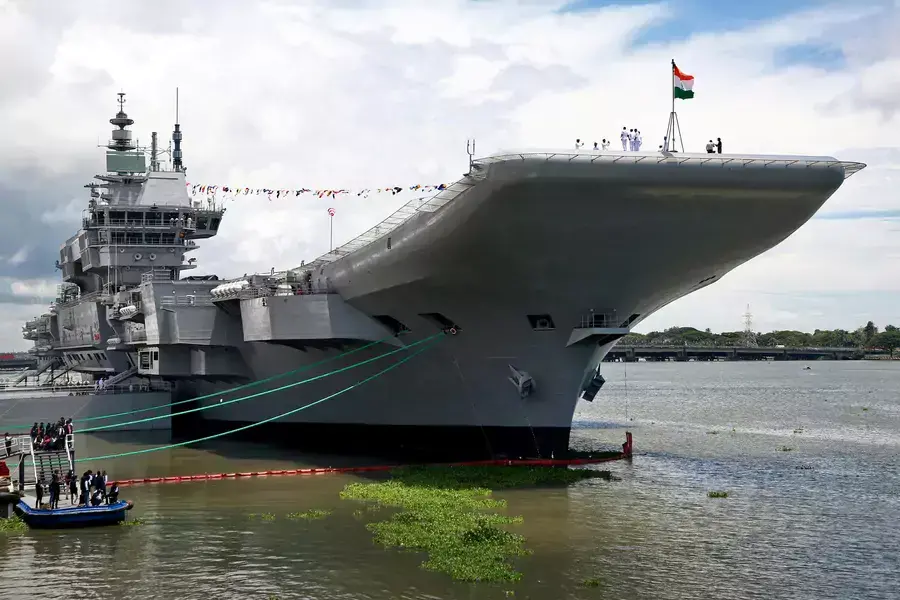India’s Efforts to Strengthen Indian Ocean Security

The U.S.-India bilateral partnership is increasingly concerned with Indo-Pacific security, which is reflected in the outcomes of Indian Prime Minister Narendra Modi’s recent state visit to the United States. The Indian Ocean Region (IOR) is a key strategic and economic theater in this region that is often overlooked by the United States but remains a high priority for India in its efforts to bolster regional security. India is the dominant player in the Indian Ocean, but its capacities are still limited. Moreover, it has historically had a more passive approach to security in the IOR. However, acutely conscious of the looming threat from China and the positioning of the Indo-Pacific as the next big theater of competition, India is beginning to both build up its capacity and become more forward-leaning. What are some of the steps that India is taking to buoy security in the IOR?
Firstly, India is making efforts to develop its maritime assets. The naval defense budget continues to increase each year—the proportion of the navy’s budget for buying new platforms and equipment went up by 45 percent in 2022 alone, and the largest proportion of increase in the defense budget this year went to the navy. The bulk of this budget is directed towards capabilities creation rather than salaries.
More on:
Furthermore, the Indian Navy is attempting to integrate new equipment and technology. In March of this year, the navy tested ship-launched Brah-Mos supersonic missiles, carrying out a successful precision strike. These missiles can be launched from air, land, or sea, and are thus a huge asset to all security arenas. The Ministry of Defence’s recent agreement to procure U.S.-made, armed MQ-9B SeaGuardian drones will further enhance India’s intelligence, surveillance, and reconnaissance (ISR) capabilities.
India is also placing an emphasis on bolstering its maritime domain awareness. In 2021, the Indian Ministry of Defence announced that it would establish forty-two new coastal radar stations to strengthen coastal surveillance. In December 2022, the government approved a major National Maritime Domain Awareness (NMDA) project to create an integrated intelligence grid that can detect and respond to sea-based threats in real time. To be able to respond to these threats, for the past five years India has also been maintaining a naval presence in the Indian Ocean, with eight ships patrolling the ocean 24/7. These are major steps in allowing India to monitor its coastal waters.
Diplomatic and cooperative efforts play an important role in India’s approach to Indian Ocean security. India is a part of the Indo-Pacific Partnership for Maritime Domain Awareness (IPMDA), a Quadrilateral Security Dialogue initiative that aims to offer an integrated and cost-effective maritime domain awareness picture to its members so they can fully monitor the waters on their shores. It is also a member of the Colombo Security Conclave, a minilateral grouping that intends to coordinate security cooperation and capacity building in South Asia and the Indian Ocean.
Recent exercises demonstrate India’s enhanced naval capabilities. In March of this year, the Indian Navy completed its four-month Theatre Level Operational Readiness Exercise (TROPEX) in the Indian Ocean. Including approximately seventy naval ships, six submarines, and over seventy-five aircraft, the exercise practiced coastal defense, amphibious actions, and weapons testing. As recently as June, the navy showcased a twin-carrier operation exercise in the Arabian Sea—a feat which China has yet to accomplish. The exercise involved the integration of two aircraft carriers along with a diverse fleet of ships, submarines, and the coordinated deployment of over thirty-five aircraft, demonstrating India’s technological prowess.
However, despite India’s increased efforts to shore up Indian Ocean security, there is still room for improvement. Even with its build-up of vessels, the Indian Navy has not ordered a new conventional submarine in eighteen years, and over half of its existing fleet is over thirty years old. In terms of maritime domain awareness, the IPMDA neglects to cover the western part of the Indian Ocean as non-Quad countries in the region are hesitant to join an initiative that they see as intending to counter China.
More on:
One of the outcomes of the United States’ Indo-Pacific strategy and closer partnership with India has been to blur the lines between East, Southeast, and South Asia, effectively drawing the Indian and Pacific oceans into a single strategic space. While India will continue to build its technological and ISR capabilities to maintain its primacy in the IOR, the future is likely to be one of increased cooperation with and support from the United States in order to do so. At the same time, India will be cautious of any increase in U.S. presence that could affect its predominance in the IOR. Striking the right balance in naval cooperation will be imperative for both countries.
Clare Harris is a Research Associate for India, Pakistan, and South Asia at the Council on Foreign Relations.
 Online Store
Online Store